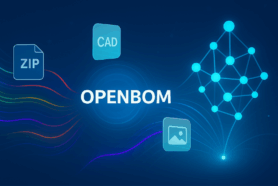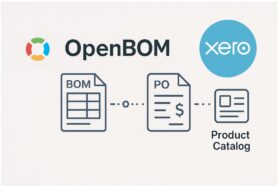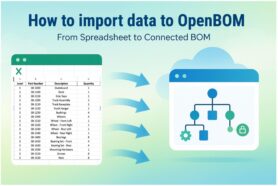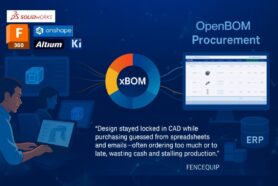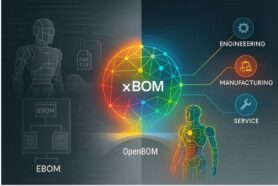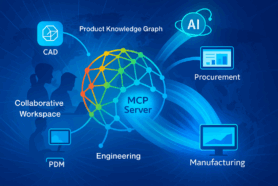
Most PLM systems were built for a different era—when engineering teams worked under one roof and product data was mostly presented as files passed through internal networks with additional metadata. PDM and Engineering use cars presented the core functions of those PLM systems. Over the past 15–20 years, technology and business models have evolved dramatically, but many PLM platforms haven’t kept up.
These systems may still be scalable and packed with features, but they often come with heavy baggage: rigid data models, monolithic architectures, and sky-high deployment costs. For today’s fast-moving companies, these platforms can feel more like a barrier than a foundation.
At OpenBOM, we stepped back and asked a more fundamental question:
What if you designed a PLM platform today, from scratch—using modern cloud infrastructure, flexible data models, and a deep understanding of how product development happens across distributed teams and organizations?
To gain more insight into the questions we raised, the reasons behind them, and possible alternatives, check out these two Beyond PLM articles I wrote last week. I was encouraged by the reactions, comments, and opinions they received—it’s clear the topic really struck a nerve.
Rethinking Monolithic PLM Architecture – Exploring What Comes Next
It’s the Data, Stupid: Building the Manufacturing Graph
This blog is the story of the architectural choices we made—openly and deliberately—to help OpenBOM support a wide range of businesses, from a few-person hardware startup to an enterprise orchestrating data across a global supply chain. We believe that openness builds trust, and by sharing the thinking behind our decisions, we invite you to better understand, evaluate, and even challenge the foundation we’re building on.
Let’s explore the five foundational elements of OpenBOM’s architecture—and how they’re redefining what PLM can be.
1. It Starts with the Data Foundation: Polyglot Persistence Including Graph Database
We knew from the start that managing modern product data means managing complexity. Part relationships, variants, supplier dependencies—it’s not just rows in a spreadsheet. It’s a web of evolving, interconnected elements.
That’s why we designed OpenBOM to use the right tools for the job:
- A graph database (Neo4j) to model a rich set of product data relationships (known as product knowledge graph) like requirements, vendors, manufacturers, suppliers, assemblies, configurations, revisions, and others.
- A document store (MongoDB) to manage flexible metadata records and to support data model flexibility and scale.
- A cloud storage (AWS) to manage flexible binary and file storage of objects and vaulting data and files.
- A search and indexing engine (Elastic) to retrieve information fast across millions of records.
This polyglot persistence architecture gives us the power and flexibility to scale horizontally and adapt to evolving data models—something most traditional PLM systems architectures struggle with.
A startup building modular drones, for example, can model shared components across dozens of configurations without writing code or hacking together spreadsheet hacks. Want to add a new attribute to all battery modules? Do it once—everywhere.
2. Flexible Data Modeling with xBOM and Object References
PLM architects often have hard time with the rigidity of traditional SQL data schemas. To support a high level of complexity requires significant efforts and complex SQL queries. OpenBOM flips on its head with a flexible object model built to adapt to complex real-world product data and process scenarios.
You can define your own objects—Projects, Products, Requirements, Parts, Assemblies, Suppliers, Documents, Configurations, Orders, POs, you name it. Add structured properties to each. Then link them together using object references (links) to build your own digital thread.
We call this flexible data model, which also supports the core xBOM model—a single source of truth that can produce multiple product lifecycle views: Engineering BOMs, Manufacturing BOMs, Service BOMs, Functional BOMs, etc. Object References (aka links) allow everyone to define relationships between objects on demand.
One of our customers, a medical device manufacturer, uses xBOM to align their CAD designs with FDA-compliant manufacturing structures. Same data, different views, no duplication. This is where flexibility meets traceability.
3. True Multi-Tenant Platform Built for Scale and Efficiency
A historical reality is that only enterprises buy and implement PLM. But in reality, every company building something complex needs product data management—they just can’t afford the overhead of traditional systems. And today, most of products are complex combinations of mechanical, electrical, electronics, and software components, capable to change already after they sold to customers, and requiring maintenance and utilization to support circular economy needs.
That’s why OpenBOM is 100% multi-tenant, meaning every customer shares the same infrastructure, but with complete data customization and security.
Why does this matter? Because it allows us to:
- Support tens of thousands of SMBs with low-cost, low-maintenance infrastructure.
- Provide a self-serve onboarding experience, like any good SaaS product.
- Enable AI-powered agents to work across micro-accounts—imagine thousands of tiny workflows running across your supply chain.
One customer uses OpenBOM to manage BOMs and procurement across dozens of different contractors—each with their own login, data visibility, and access controls. All from a single platform instance.
The unit economics work, and the scalability is built-in.
However, this multi-tenancy is a selective options through different deployment options. While everyone can register to OpenBOM account on openbom.com, the enterprise deployment can make an instance of OpenBOM platform deployed for a specific enterprise company or a group of companies together with their suppliers.
4. Live Collaboration, Simultaneous Editing, No Locking Needed
Engineering collaboration often breaks down when people are working on the same thing—but in silos. With OpenBOM, everyone sees the same data in real time. Similar to Google Sheet collaboration, OpenBOM Collaborative Workspace technology allows to change data simultaneously with automatic capturing of change history and revision control. Think of it like Google Sheets—but for structured product data.
Designers, buyers, and operations can work on the same assembly, and changes show up live. If you’re a small team trying to hit a tight deadline, that saves hours every week. If you’re a global team with teams in Asia and Europe, it’s the difference between chaos and alignment.
One customer making custom electronics said:
“We moved from emailing Excel sheets to real-time collaboration. Suddenly, our buyers were always working with the latest spec—and that alone paid for the subscription.”
5. Digital Thread as a Service (DTaaS)
Here’s where we are geting really excited interesting—OpenBOM is a platform for building digital threads across teams and companies.
Because of our semantic graph foundation, OpenBOM can:
- Connect data from CAD, procurement, inventory, and documents.
- Trace every change across products, revisions, and supplier inputs.
- Serve as a digital infrastructure for partner networks, contractors, and suppliers.
We call this Digital Thread as a Service (DTaaS)—a way to weave together structured data from multiple organizations, without forcing everyone into a single monolithic platform.
A large manufacturing group can use OpenBOM to link their internal engineering BOMs with external fabrication and assembly partners. No more emailed PDFs. No more “which version is this?” confusion. Just one shared thread of truth.
So, What’s Possible Now?
OpenBOM is showing what’s possible when you stop trying to force old architectures into new workflows.
- For SMBs, it’s a low-cost, zero-maintenance platform to get organized and scale fast.
- For growing business, it’s a flexible backbone for connecting internal systems with external stakeholders
- For everyone looking for AI implementations, OpenBOM is an enabler of AI-driven agentic workflows (stay tuned for more info coming).
You don’t have to choose between simplicity (let’s scale down enterprise PLM to be simple and out of the box) and power (flexible data model and scale) anymore. OpenBOM architecture is built to deliver both.
Conclusion: Try It for Yourself
Curious how OpenBOM could help your organization? Here’s how to get started:
- Start a 14-day trial — instant registration in 30 secods
- Book a live demo with our team.
- Or just shoot us a note at support@openbom.com — we’re happy to talk.
Because good architecture doesn’t just support your current needs—it opens doors you didn’t know were closed.
Best, Oleg
Join our newsletter to receive a weekly portion of news, articles, and tips about OpenBOM and our community.



